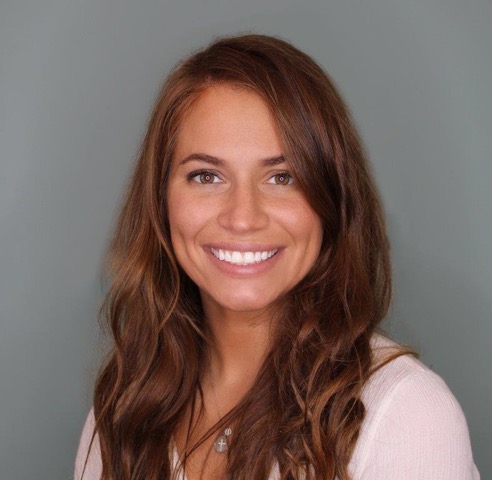
I know how difficult it can be to struggle with daily tasks like getting dressed or leaving the house. I was a 17-year-old soccer player with plans to study nursing when a sledding accident left me paralyzed below the waist.
It was tough at first, and I felt pretty hopeless. However, the support I received from occupational and physical therapists who helped me along my rehabilitation journey made me realize everyone deserves compassionate, individualized care that helps them remain independent and confident — no matter their age, physical disability or income.
Now, I’m a licensed occupational therapist with the nonprofit Gary & Mary West PACE in San Marcos, CA, and I have dedicated my career to giving people their independence back. I draw from my experience as a wheelchair user to help seniors of all income levels with physical disabilities, traumatic brain injuries and other neurological conditions regain the ability to do what they need to do in their daily lives. Importantly, my PACE affiliation allows me to provide meaningful, comprehensive support to family caregivers who are often “sandwiched”, caring for both aging parents and young children while working full-time or more.
The vast majority of older adults, including those with disabilities or chronic illnesses, want to age in place at home, according to a recent AARP poll — and their family caregivers need comprehensive support to make this possible. PACE, which stands for Program of All-inclusive Care for the Elderly, is an innovative care model providing wrap-around medical and social services to individuals 55+ with complex medical needs. All these services are provided in-house from a local PACE center, enabling participants to stay as independent as possible in their own homes.
PACE, which is a fraction of the cost of nursing home care, has been shown to reduce emergency room visits, unnecessary hospital admissions and long-term nursing home placements for older adults. Currently, COVID-19 cases among PACE participants are about 80% lower than the case rate among nursing home residents.
Importantly, PACE also provides significant relief for caregivers, by simplifying what would otherwise be an astronomically expensive, complicated web of services such as primary care, dental care, physical and occupational therapy, nutritional support, adult day care and even haircuts. Family caregivers of PACE participants benefit from in-home support at a much lower cost than a standard home health aide, and have an experienced, communicative care team behind them.
As a PACE occupational therapist, I provide a holistic, functional approach to restoring older adults’ ability to perform the activities of daily living (ADLs), from basics like bathing, feeding and dressing themselves to running errands or getting back into a cherished hobby. I often go into my clients’ homes to make recommendations for modifications. Whenever I meet a new PACE participant, I make a point to ask what their goals are, what activities and skills are important to them and whether they feel safe doing those things. This informs how I develop a care plan, often in coordination with our staff physicians, physical therapists, and other support staff.
Here’s what might be on my schedule any given day:
- Work with a 65-year-old stroke victim at West PACE Day Center and Therapy Gym, helping him regain his mobility so he can walk his daughter down the aisle at her wedding;
- Use my upper body to “bump” myself up the stairs to an older veteran and wheelchair user’s walk-up apartment (true story), then make arrangements and home modifications that allow him to leave his apartment for the first time in months;
- Help a client modify her home to prevent falls, which can precipitate a quick decline for elderly individuals, and learn to safely use a walker to get around.
And that’s just the tip of the iceberg. Last year, some state laws allowed PACE to expand its home-based care and telehealth services for medically frail seniors. As such, demand for PACE services markedly increased during the pandemic — but far too many of the seniors and family caregivers who could benefit from them don’t know PACE exists as an option. Even though PACE has been around for 50 years, with 140 organizations in 30 states serving more than 55,000 enrollees nationwide, this is nowhere near the number of qualified seniors we could be assisting, and the program remains underutilized.
September is National PACE Month, when we celebrate PACE’s positive impact, and raise awareness of this innovative care mode. If you are a caregiver or a senior with complex medical needs, see if PACE is available in your neighborhood, and contact your local PACE center for more information.
Alyssa Armstrong is a licensed occupational therapist at Gary and Mary West PACE in San Marcos, CA. This PACE program was established with a grant from the Gary and Mary West Foundation. Visit www.westpace.org to learn more.
This article originally appeared on McKnight's Senior Living



